
2020 Centre Pompidou // Dust: The Plates of the Present, Paris, FR // Group
Dust: The Plates of the Present is a photographic installation made between 2013 and 2018 at the initiative of Thomas Fougeirol, the French painter, and Jo-ey Tang, the American artist and curator. Together they invited visual artists, musicians, writers and video-makers of a variety of nationalities to produce a series of eight photograms in an improvised dark room in Ivry-sur-Seine. Dust is a grandiose collective work that pays homage to a rapidly disappearing form of image. This exceptional work constitutes a considerable enrichment of the collection in which experiment photography occupies a place of primordial importance.
//
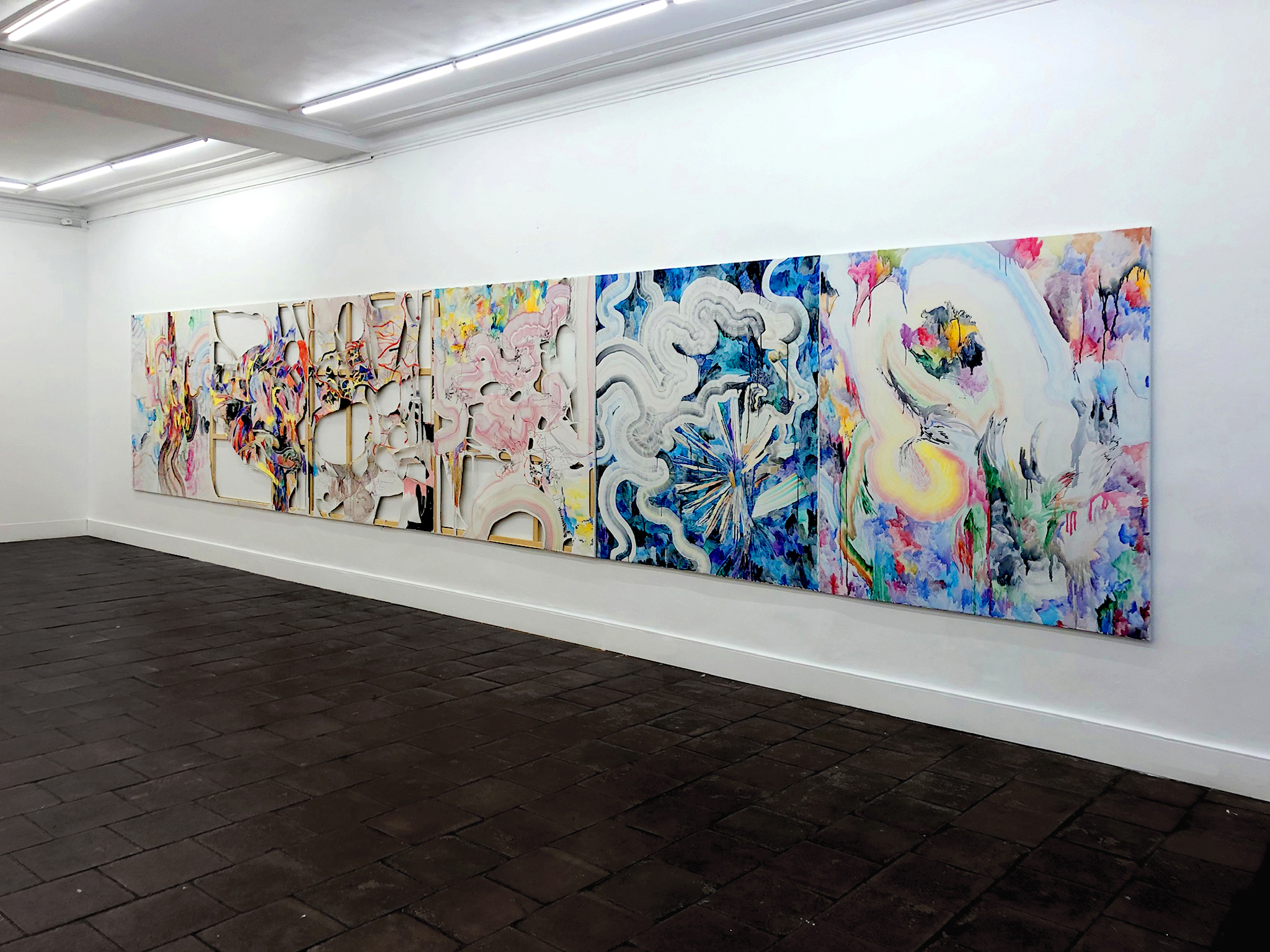

A good painting starts with a line. A line — which the painter is to work and rework, search for, unveil and eventually grasp. Every line is different, or should be so. Patricia Reinhart’s lines are fluid, yet firm. In a nurturing, motherly way they surround and caress the shapely volumes. The paintings engulf the viewer in; invitingly. In a psychic manner, rainbows become paths, and paths intertwine in fuzzy bulks of watercolor cotton. Master of her shapes, Reinhart punctures, cracks, cuts them (off), deflates and lets them leak or strangles and molds them. In a quasi sculptural process, she assembles her paintings, layering the forms and the pigments. Evoking the unavoidable earthly physical constructions of Gaia, that result from natural cataclysms as volcano eruptions, tsunamis or simply the passing of time, the paintings’ organic contours bring about layers of mountains, soil, seashells or tree rings. As flat as a painting is meant to be, here, we’re lost in a voluptuous dimension à la trompe l’oeil, which denotes — and in a quite obvious way — that the Painter’s line was ascertained through years of work, practice and voyage, refining a figurative aspect into today’s self owned abstract configuration. It is indeed the Viennese academic tradition, surrounded by the likes of acclaimed curators Harald Szeemann and Kasper König, that transpires in the persevering gestures of the artist, the kernel of the work.
The exhibition IN BLOOM in the space of Galerie Mansart forges a natural (prophetic) topography of the pictorial creation of Patricia Reinhart. A profound and limitless landscape, capturing the viewer in the center point of a galaxy, where each painting would represent one of the unlimited number of perspectives. In consensus with pioneering female painters such as Joan Mitchell, Martha Jungwirth, Georgia O’Keefe, Helen Frankenthaler — Reinhart’s work is not disclosing a feminist aspect, rather a feminine discourse, revealing honest human angles. Reflecting shades of supernatural light, the paintings invite the viewer in the mystical and strange cycles of life and its origin. As a reference to the title, the austerity of the enchanted pattern of reproduction of flowers transpires through the brush strokes as to remind us of the magic, which is the starting point of our existence. // Text by Gabriela Anco, 2019
//
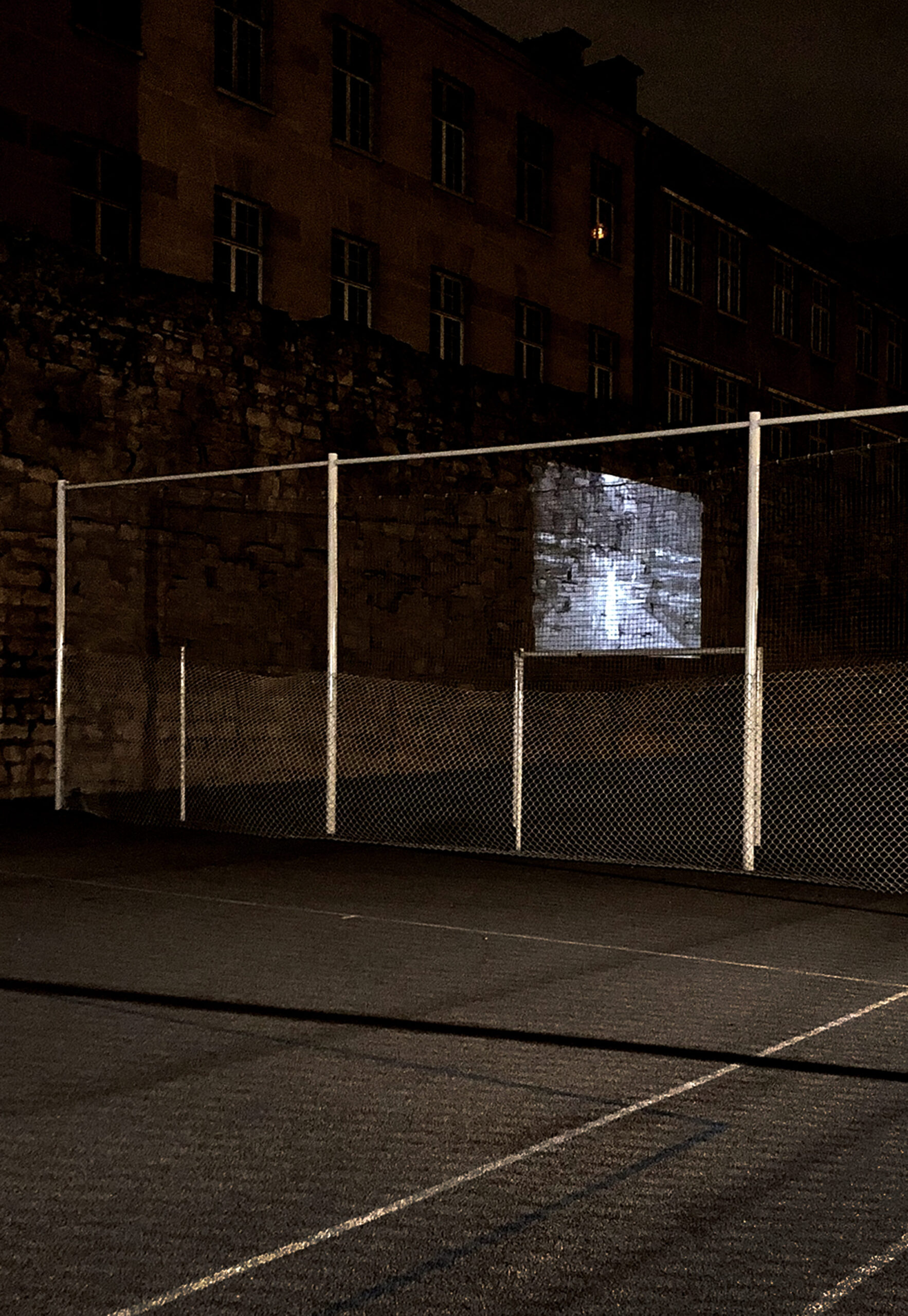
2018 AD France, FR // Nuit Blanche : notre parcours à suivre // Screening
Patricia Reinhart’s latest cinematic collage delves into the intricate mechanisms that govern contemporary relationships between men and women. Drawing inspiration from the theories of psychoanalyst Arno Gruen, her work explores the disparate dynamics at play in today’s society. The exhibition is located at Enceinte de Philippe Auguste, Rue des Jardins Saint Paul, 75004 Paris.

Nothing is more flexible and weaker than water, but to remove the hard and the strong, nothing surpasses it. Weakness is the reason for strength; flexibility is the reason for hardness. Everyone knows it, but no one can put it into practice.
Lao Tzu
Patricia Reinhart encompasses painting, photography and video installations projected in public spaces. Creating a synergetic yet subtle dialogue between these distinct artworks, her art merges these three mediums in her own original manner. The Austrian visual artist offers sensuality as a red thread of identity.
As a woman, after the storm, I lay down my arms. I don’t want to fight anymore or to act like a man. I would love to go to the garden, as a woman.
Patricia Reinhart
The imagery of water is present in all of Patricia Reinhart’s video pieces. The sea surrounding the island, the waves stirring the beach where the nuns walk, the flat pool surfaces, the rivers where Ophelias and waterlilies float, the exploding waves, the water nourishing the lush gardens. A Jungian symbol of unconsciousness, water inviting us to consider the hidden yet limpid, powerful yet submerged. It is enough for very little, he wrote, „to shatter the semblance of unity of consciousness, to disintegrate it into its first elements.“ A plurality of selves, emerging from awareness. Beneath the surface of every lake, exists a parallel universe on the other side, we become aware of the back of the mirror, the surf and the tide. Simultaneous and vertiginous possibilities, carried by the current of water, waves, tides, repetitions of filmic images. In this game of reflections, an abyss of cyclical life and death in the rhythm of waves, sunrises and sunsets and the phases of the moon. Staged self-portraits are the center of her work – installations, films and photographs. These female figures, like the Platonic sirens, singing the music of spheres that produce harmony of the universe, embodying the energy that surrounds them and from which they are the emanation. An energy of strength and power, intractable to be conquered or tamed, but awaiting self-awareness. An island sea that is an integral part of the woman element, which can be inhabited with serenity or savagery, in the dark abyss or transparent surface, and which can give life or destroy it. By abolishing its surface, passing on the other side, dissolving matter in water and water in matter, dissolving itself in time, repetitions, reflections, blooms. I am the lady of the garden, says Patricia Reinhart. I am the lady of the garden, says the garden. // Text by Carine Dolek, mowwgli, 2017. * La dissociabilité de la psyché – C.G. Jung.
//

2018 Fondation d’entreprise Pernod Ricard // INTOTO 6, Paris, FR // Group
For each edition of INTOTO, Thomas Fougeirol, Julien Carreyn and Pepo Salazar methodically scour a selection of artist studios in search of found objects: a test pressing, fragmentary products of studio work, domestic remnants. In these, they see evidence of a primitive practice, below all manufactured completion.
//

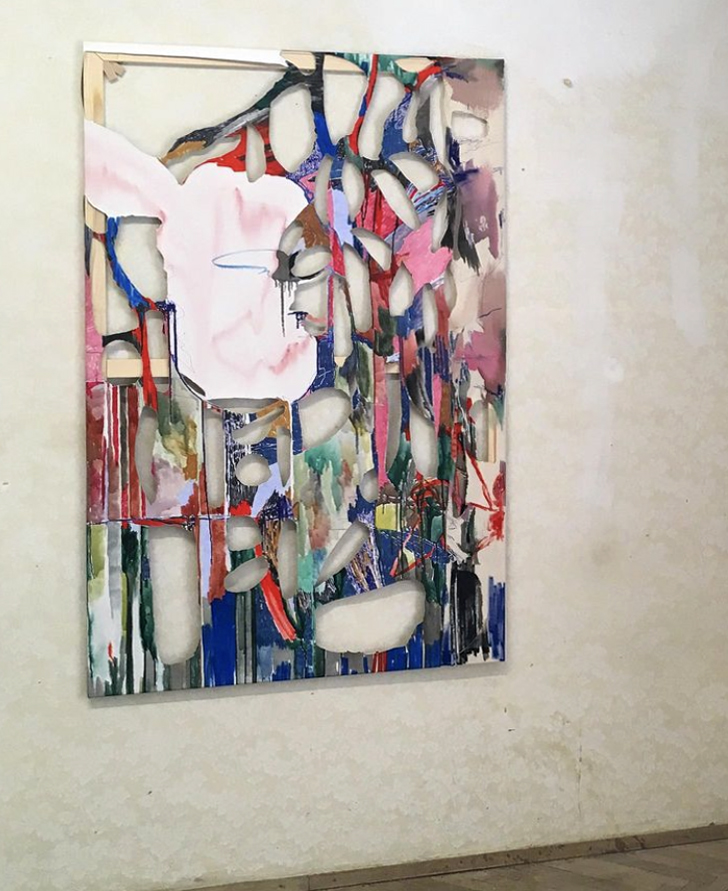
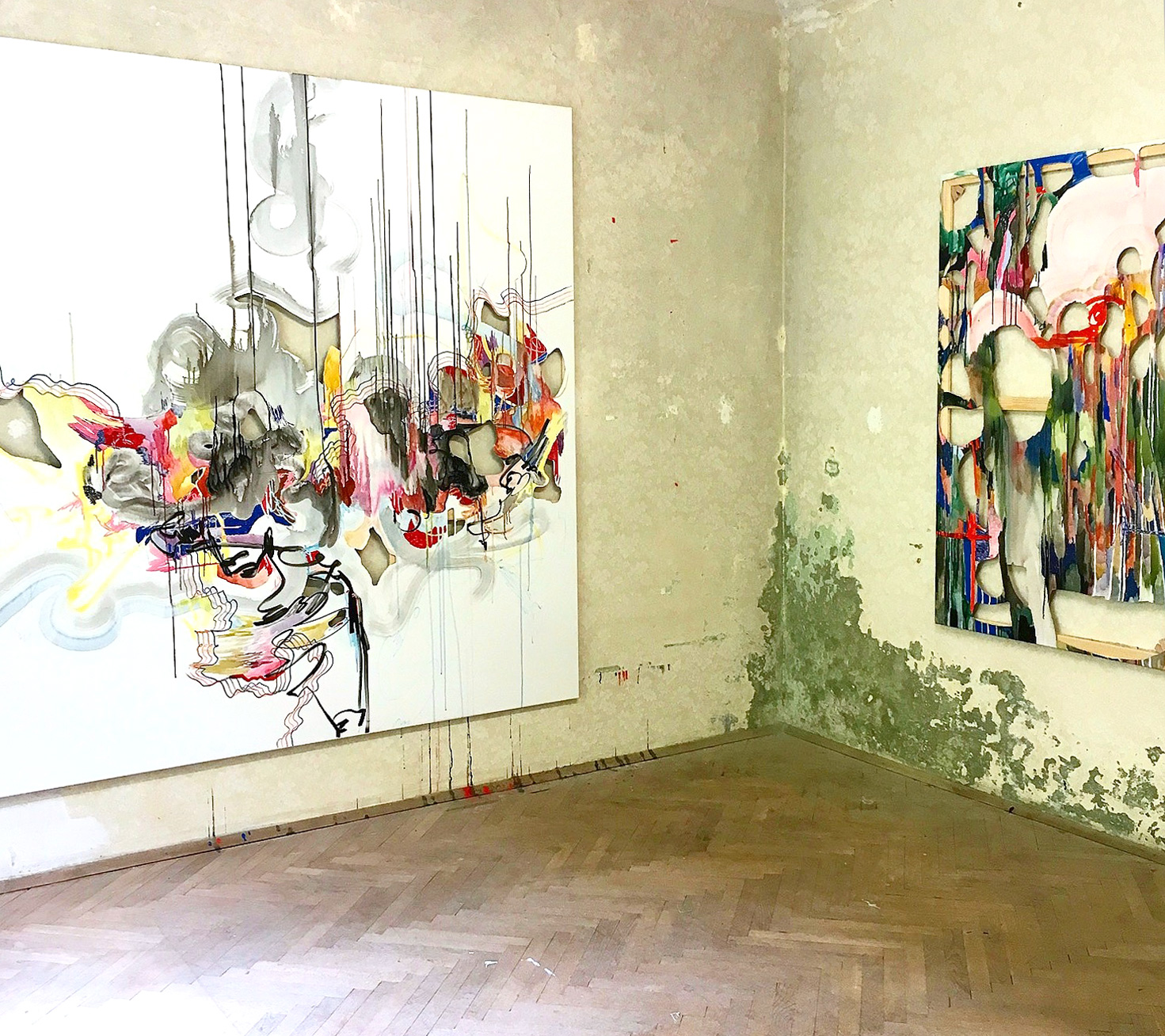
© Photo credit: Patricia Reinhart / Bildrecht
Sommer.Frische.Kunst 2017, Festival of Contemporary Art // Kraftwerk & Galerie, Bad Gastein, AT / GIUSEPPE GONELLA, TAKEO MARQUARDT, PATRICIA REINHART, HELGA SCHMIDHUBER, CHRISTIAN SCHWARZWALD, MUHANNAD SHONO and PHILIPP FÜRHOFER, JEPPE HEIN, ILONA KÁLNOKY, FLORIAN KOLMER, ANDREAS MÜHE, GERWALD ROCKENSCHAUB
//
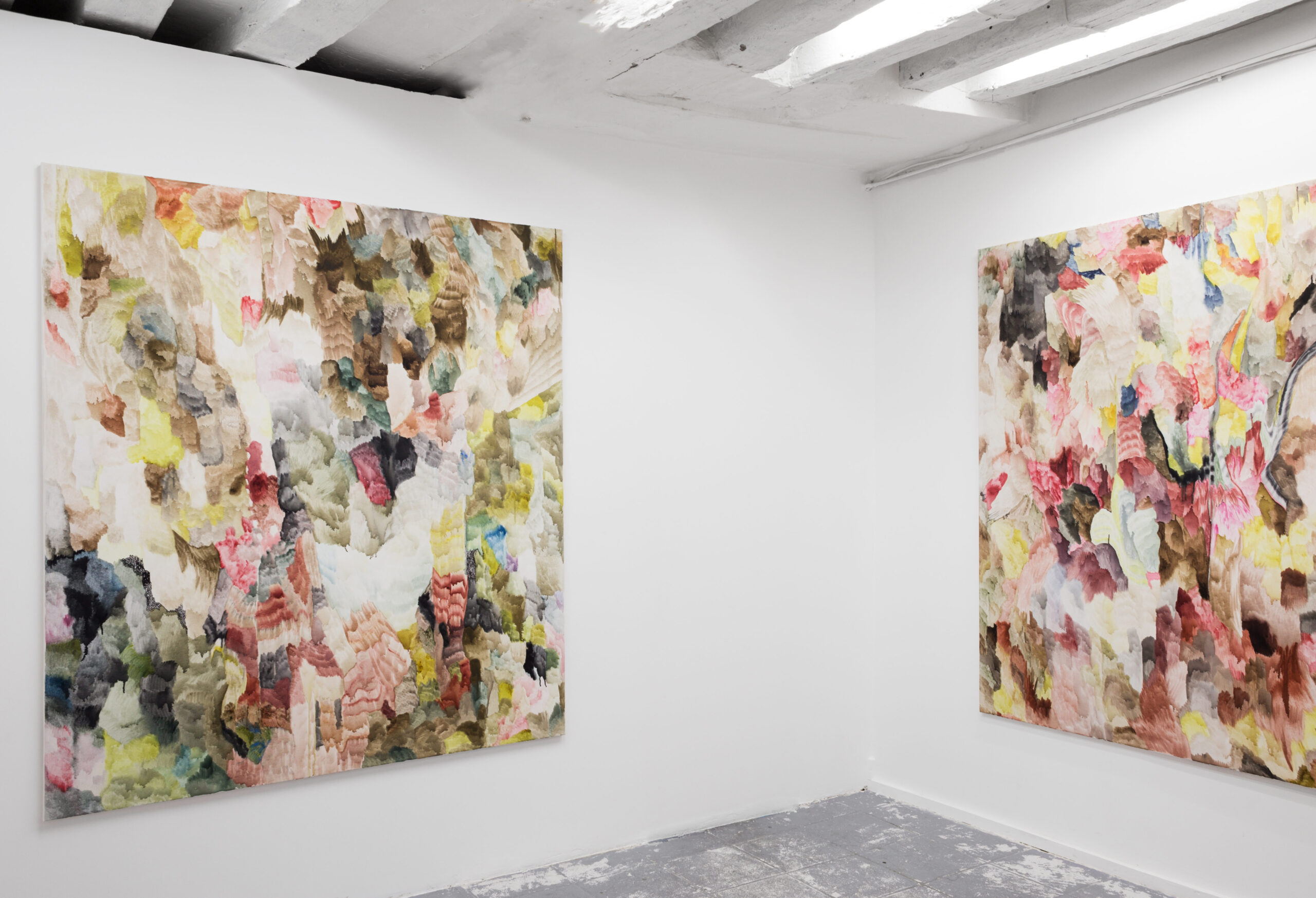
2016 Rinomina // Leucadian Leap, Paris, FR // Solo
Movement is at the center of Patricia Reinhart’s new series of watercolor paintings. The movement of the paint along the surface of the canvas but also dramatic interior movements. The painting titles are allegories for the evolution of emotional states. The series of paintings which began in 2015 with Patience I – La Tempête / Tourmente continues into the present with Patience XV – Über die Notwendigkeit des Zerschmetterns.
The passage of color through light, the visible flows of water on the surface of the painting and the movements of the artist’s hand express the latent possibility of the organic form. In this matrix, shaped like a pattern of lines and space, arises a situation or a set of conditions in which something else develops. The weft of the linen canvas becomes visible with the pixilated grain that develops on the edges of the brushes of color. The painting series Patience is a natural extension of Reinhart’s latest video project Anoir and the Woman in the Garden and features the same emotional landscapes and environments. The paintings in the Patience series are titled: L’Amour, L’Hiver, The Garden, La Forêt et le Ciel. Reinhart’s work is an intensely personal meditation on the figure of the woman embodied by the artist herself who is the actress in all her films. A meticulous layering of film stills, a technique she calls “ciné-collage” allows her to bind still images together and to color film stills.
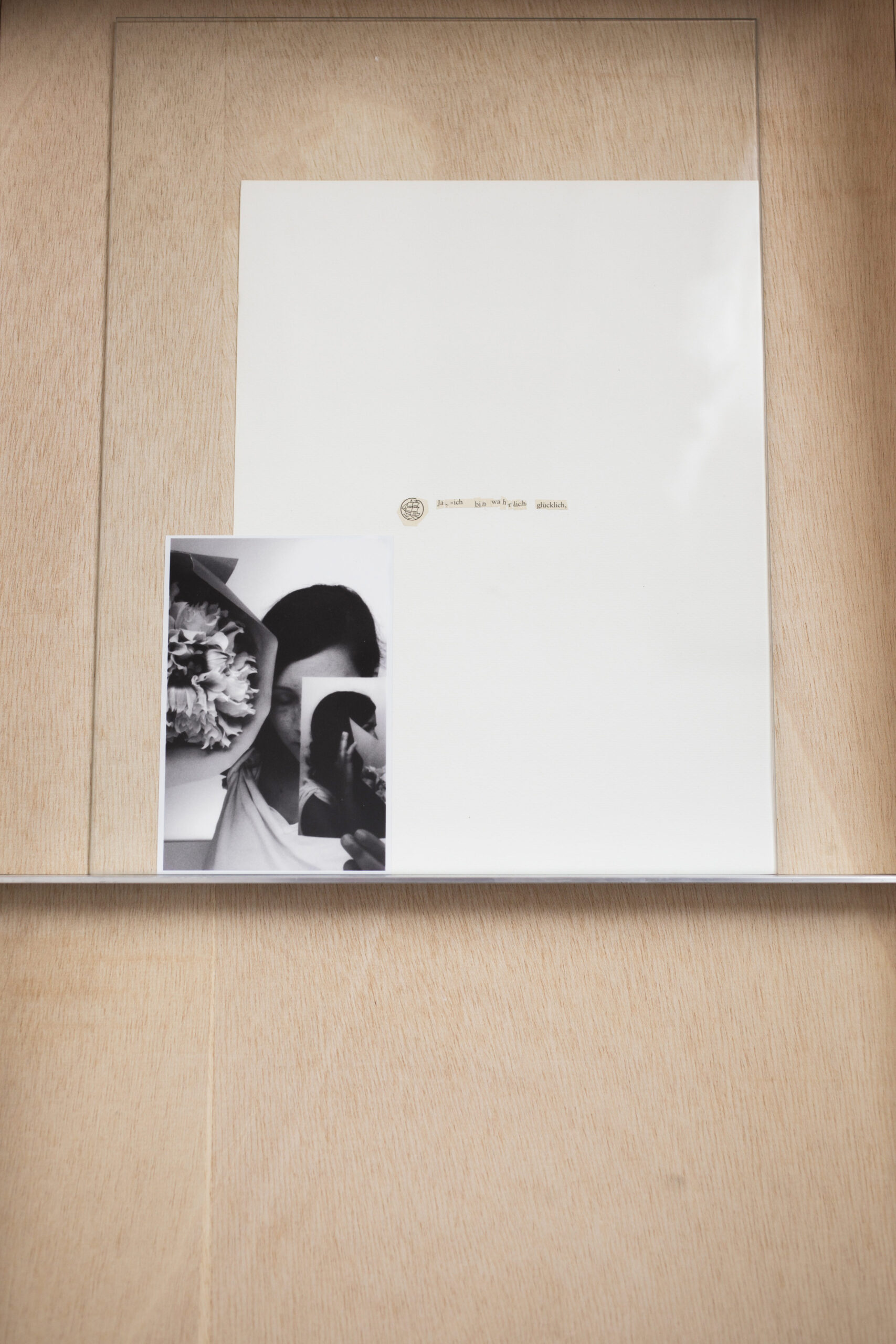
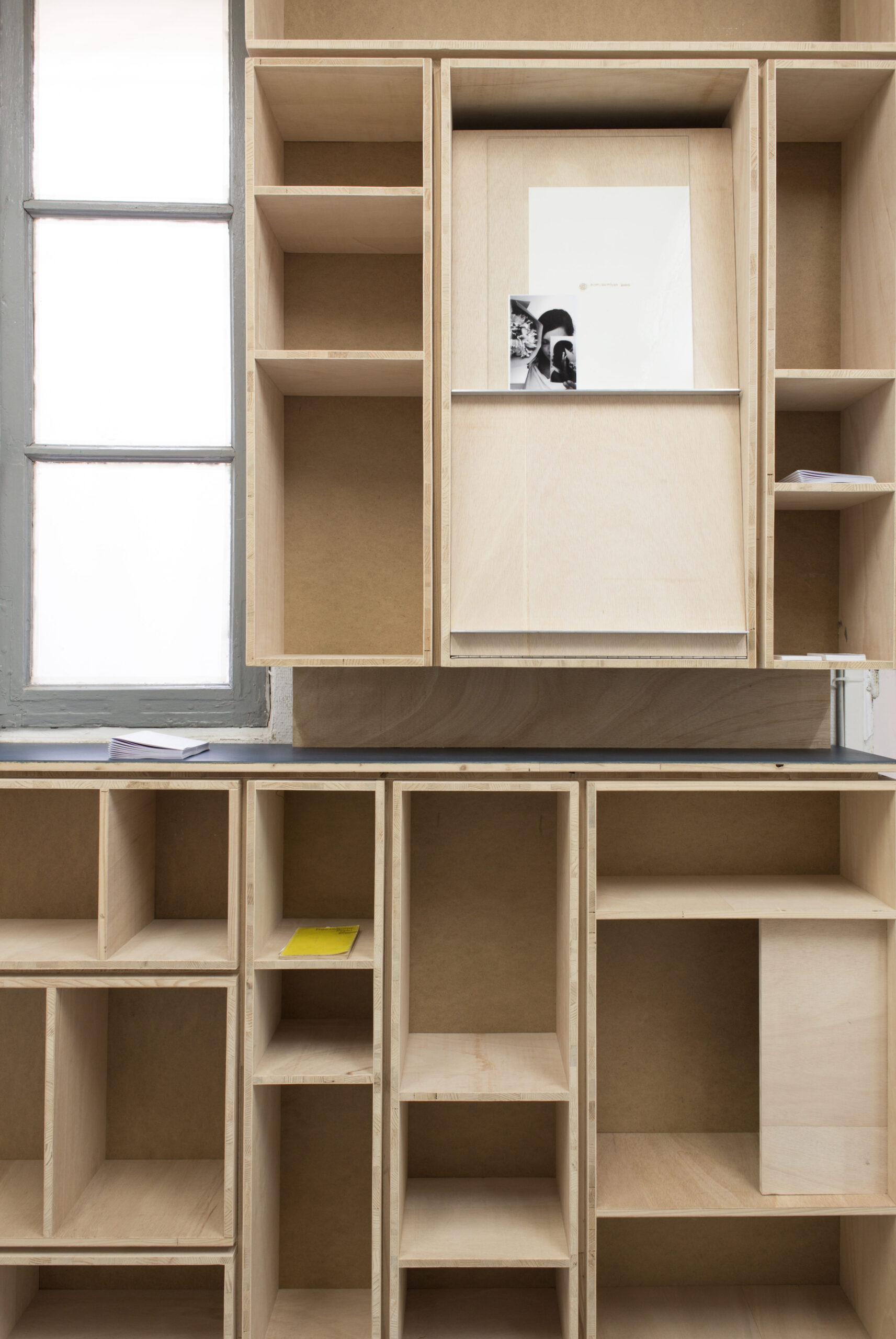


The poet and art critic Charles Baudelaire remarked that a woman’s hand viewed under a magnifying glass would create a perfect harmony of grey tones, blues, browns, greens, oranges and whites warmed with a bit of yellow. A true colorist might be able to translate these shifts in scale between our microperceptions and visible reality. The two latest paintings in the series which have been selected for this exhibition, Patience XIV – Attitude / Das weibliche Rückgrat and Patience XV – Über die Notwendigkeit des Zerschmetterns, speak to the need for embodiment and transcendence as well as the passage of time. // Text by Emmanuelle Day, 2016.
//


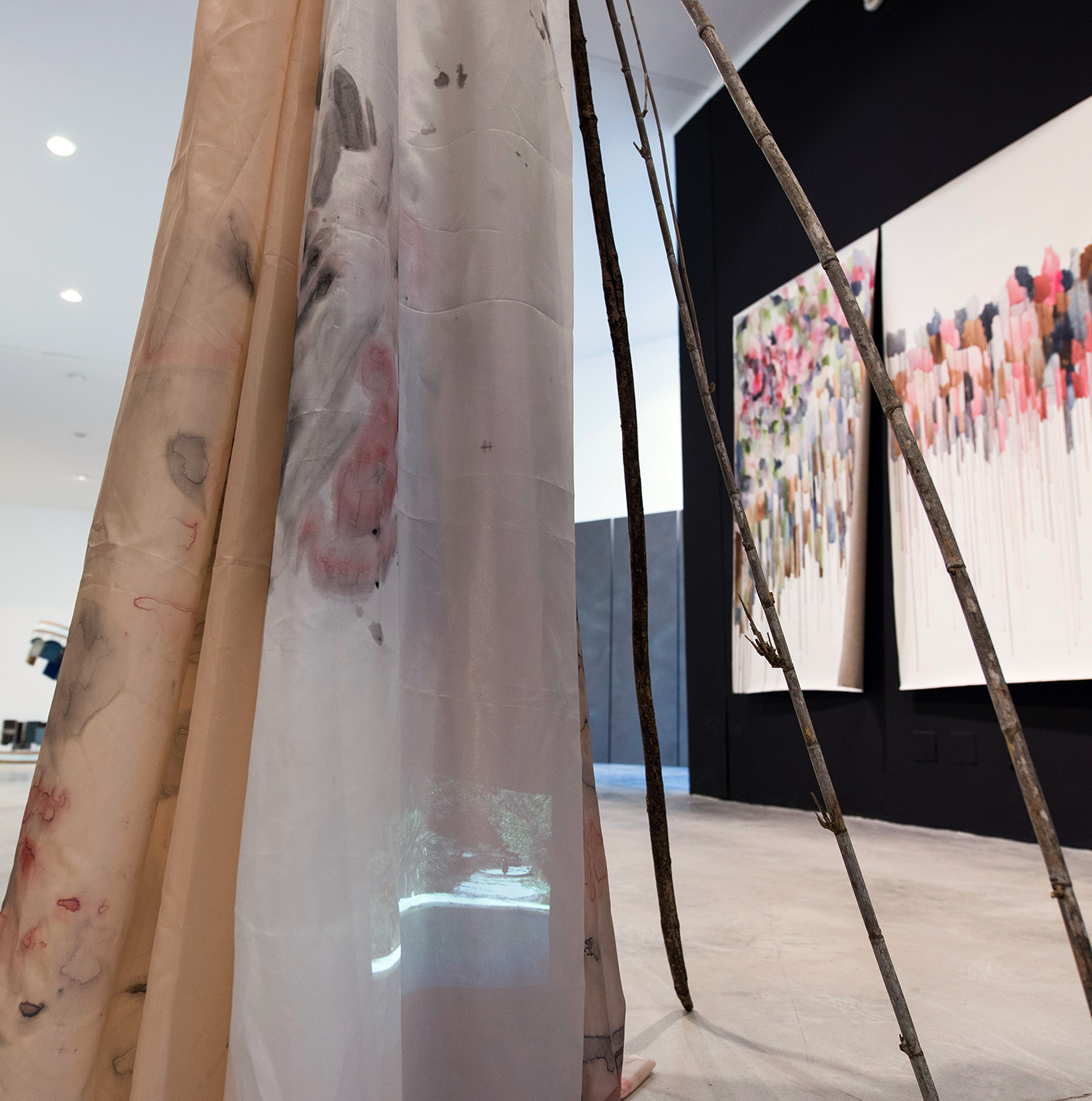
CCA – Andratx, CCA Gallery, Mallorca, ES, June 2015 // Patricia Reinhart, Helga Schmidhuber, Isabelle von Schilcher.
//
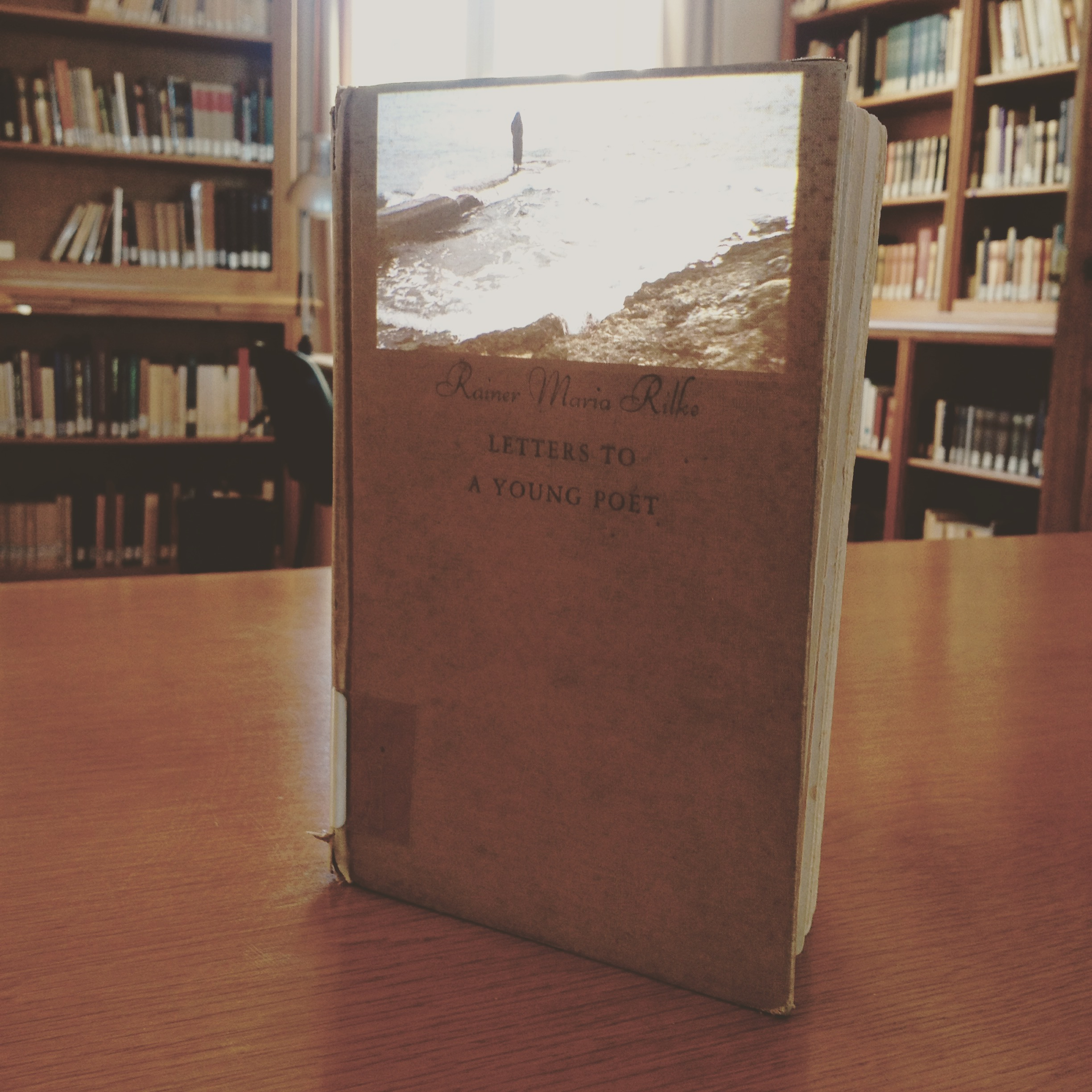
Synchronicity, inspired by C.G. Jung’s concept of an acausal connection through significant coincidences of physical and psychological phenomena, is an ongoing artistic endeavor by Patricia Reinhart. This project explores the interplay of synchronicity with various media and presentation formats in her artworks.
Comprising different exhibition forms occurring at diverse intervals, selected works are showcased in public spaces and other venues. The inaugural event featured a video installation, Die ihr Brot mit Tränen aß (Requiem for an Unendurable Paradise), publicly screened at Canal St. Martin in Paris (June 2014).
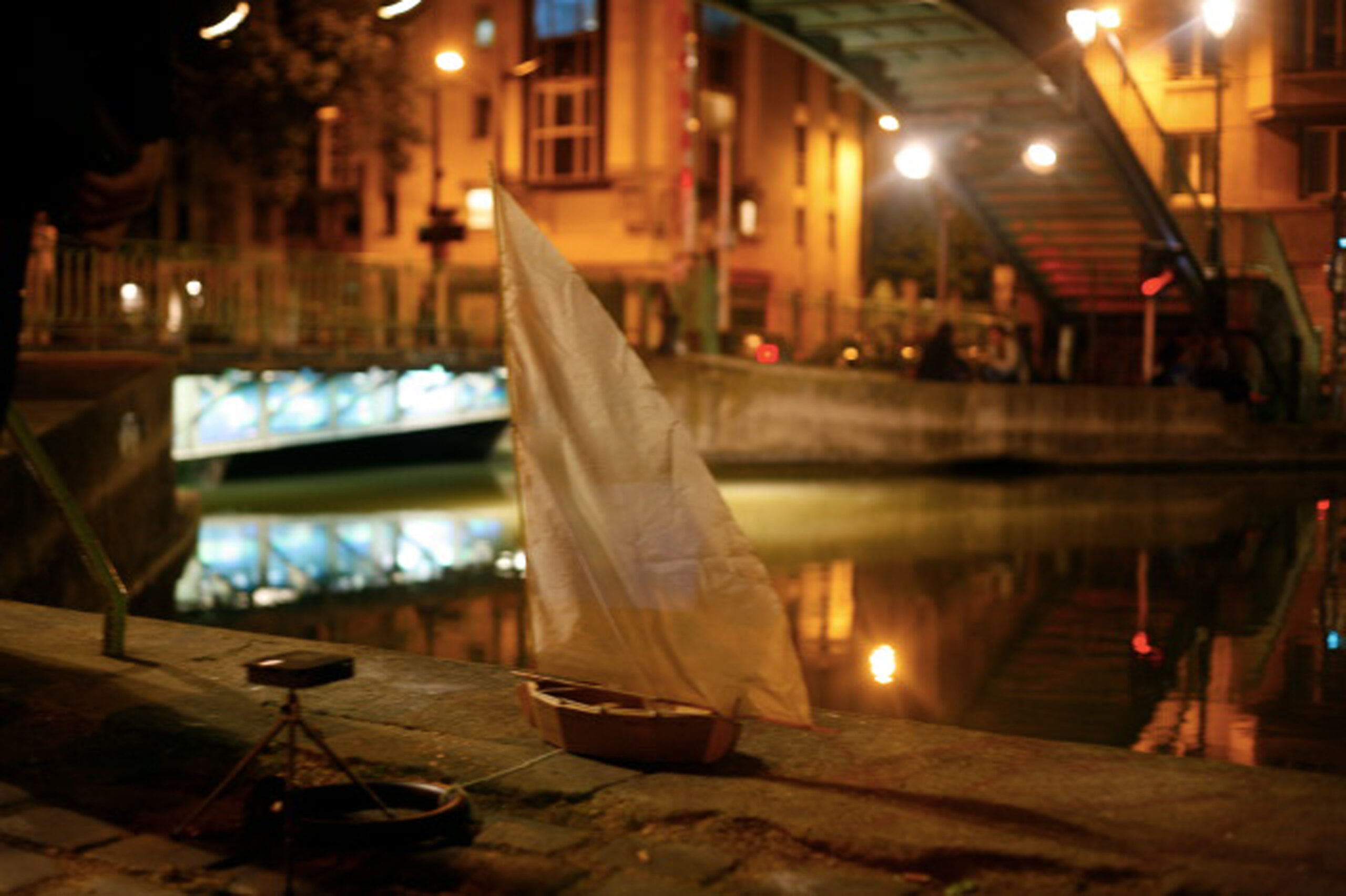
The second event unfolded as a performative installation with multiple elements in the artist’s private apartment on rue de l’exposition, in the 7th arrondissement of Paris (December 2014).
The third event, a video installation, utilized a found wooden stick and fabrics set against the cliffs of Cassis, France (July 2015).
Finally, the fourth event presented a video installation, featuring an excerpt scene from the recent work Anoir and the Woman in the Garden, displayed on a book within the library of the Camargo Foundation in Cassis, France (August 2015).
//

2014 HKW – Haus der Kulturen der Welt // Ghosts, Rencontres Internationales, Berlin, DE // Screening
Rencontres Internationales Paris/Berlin/Madrid 2014 showcased over one hundred unreleased films from forty countries, providing a critical exploration of the contemporary culture of images at the intersection of aesthetics, social dynamics, and politics. Curated by Nathalie Hénon and Jean-Francois Rettig, the program addressed the evolving landscape of image production and dissemination.
//
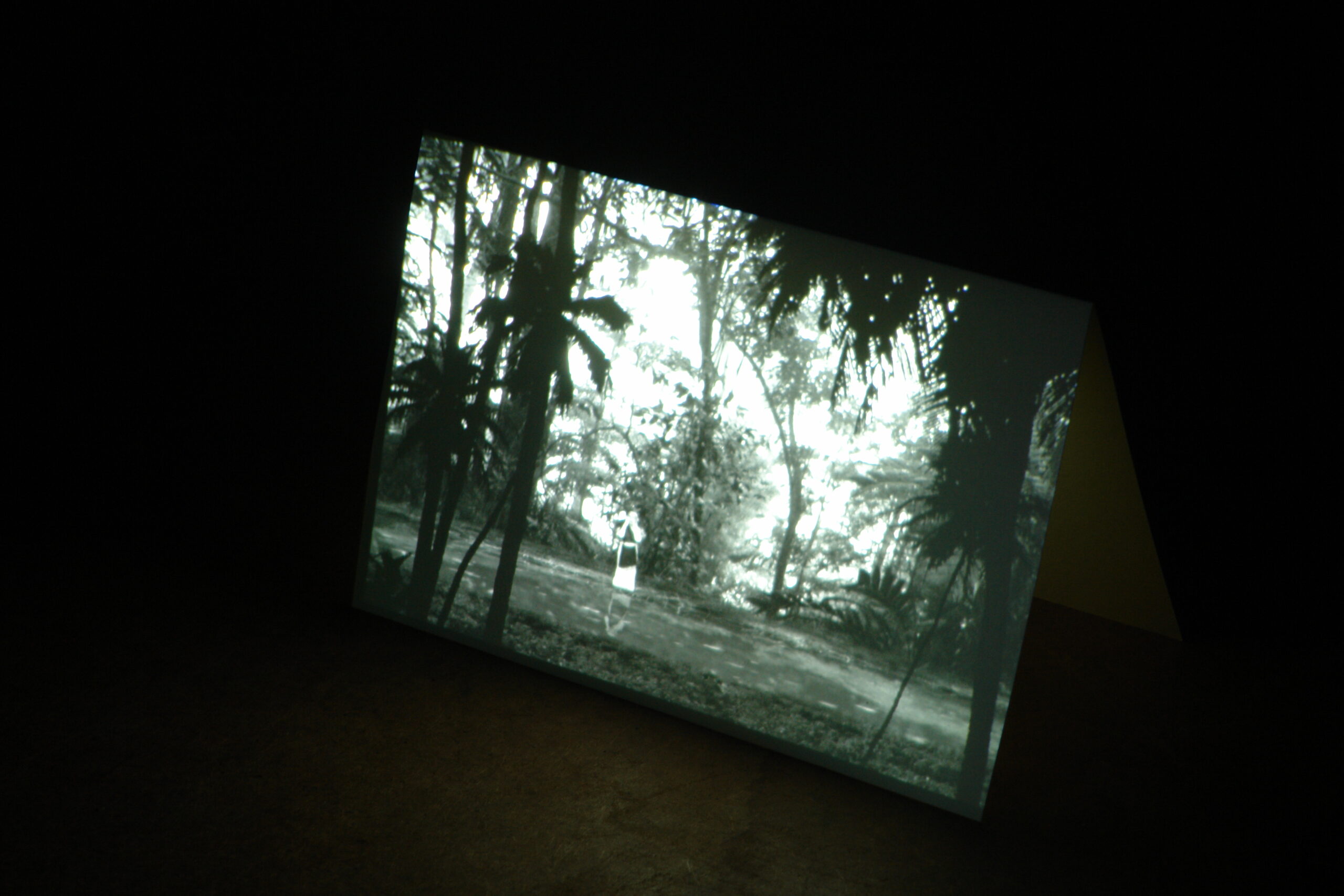
It was a late Sunday afternoon in the summer of 2014, when I met Patricia Reinhart for the first time. Introduced by a mutual friend of ours, we ended up spending a rainy afternoon together on the terrace of Palais de Tokyo.
The summer came and went. The next time when we saw each other was at a group exhibition entitled 48°28’39”N 2°12’47”E – Les pierres se battent entre elles, in which Patricia was participating with her video work Die ihr Brot mit Tränen aß (Requiem for an unendurable paradise). Yet the context for a screening sounded rather demanding, as the exhibition took place in direct sunlight in a middle of a forest, with no electricity on hand. Leaving the chance for the unexpected though, as she usually does in her work, Patricia had discovered an abandoned tent in the very same spot where the exhibition was bound to be. Screened inside the tent, this work revealed to be a combination of video material and still photographs. This technique entitled ciné-collage, developed by Patricia herself, allows the use of photographs as painterly layers, creating thus a singular texture for the work. In the video, a woman follows a desolate path, from rural to urban purgatory: the scenery changes from the pool to the stormy sea, from the garden to the burning city of Wien. Profound patterns of symbolism accumulate: antagonistic yet complimentary symbols of life and transformation – water and fire – are playing important roles in her work. While water in movement constitutes a symbol for a transitory state between different possibilities, those accomplished and those still to emerge, the fire stands for death and rebirth, purification and illumination. I still recall that afternoon very well; it was my first encounter with Patricia’s work, surrounded by a highly contrasting context.


In December, I received a small handwritten envelope by mail, containing an exclusive invitation for Patricia’s solo show, a performative installation entitled Synchronicity Part 2, (The Black Velvet Room Paris), a follow-up for the installation and public screening organized at the Canal St. Martin the previous summer. The address was aptly to be found at Rue de l’Exposition, in a rather posh area of the 7th arrondissement: after being received by a blond vamp dressed in a fur coat, I was led into a private apartment enveloped entirely in black. A mixed scent of cigarettes and perfume was lingering in the apartment, while the guests were sipping wine and chattering in low voices. Reminiscent of a Freudian setup, the space was constructed in an intimate dialogue with her works: I had the impression as if the whole apartment was actually a stage with a mise-en-scène, and we, the guests, were the actors of this play.
All the works on display were projected and installed in a non-classical way: a screening of her video Die ihr Brot mit Tränen aß (Requiem for an unendurable paradise) was projected from an open window on the wall of the neighboring building, a super 8 film projection of Ophelia was projected on the back of a painting, a paper with a handwritten love poem was rotating on a record player … The ensemble created surprising encounters in the exhibition space: the entity floated into an opaque gradual degradation of surroundings and eventually, allowing me to forget where I was.
Many things happened over the long winter months: during these months, when our friendship got deeper, I also discovered probably Patricia’s most intimate series of work: her self-portraits. This series started in 2001 when she arrived to Paris for the first time, and has been an ongoing project ever since: it is a way to record the past, yet actively to reconstruct a new paragraph. In this series, a form of double-portraits unfolds itself, and an image finds itself captured in another portrait. This self-reflective approach allows mirroring the subject both as familiar and as subconscious, while a self-narrative takes place within the framework. Despite the series’ intimacy, the photos nevertheless impose a distance, exactly because of their form: self-portraiture allows oneself being a tourist in one’s own reality with a hidden gaze, drifting away into a soft abstract pastness.
At this moment, when writing this text, almost one year has passed since our first encounter: our meeting, perhaps an arbitrary one, has become a meaningful narrative. It seems like an eligible way to conclude this text in presenting Patricia’s latest work. A shift towards new techniques and experimentations with her series entitled Patience, aquarelles on linen dating from 2015, can be observed. They enter in a constructive dialogue with her previous body of work – yet a clear shift in time and space can be observed. The new direction suggests that the chapter is about to reach its end, after having leafed through some torn pages. The figure of a woman is arriving at her destination after the apocalyptic series of events, and a moment of reconciliation reveals itself: a serene garden is looming out in the horizon, but still with the presence of gentle and soft shadows. // Text by Sini Rinne-Kanto, 2015.
//
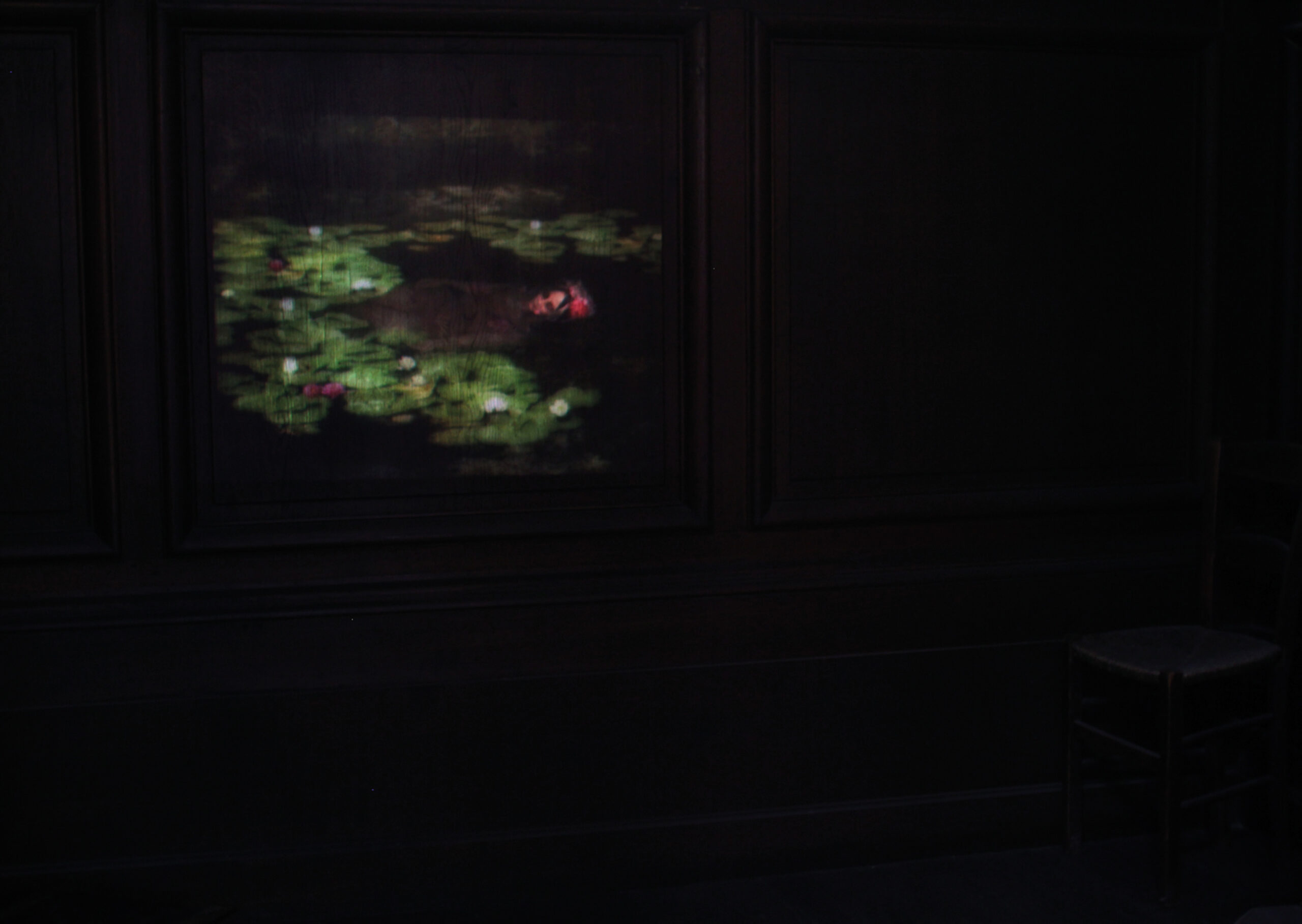
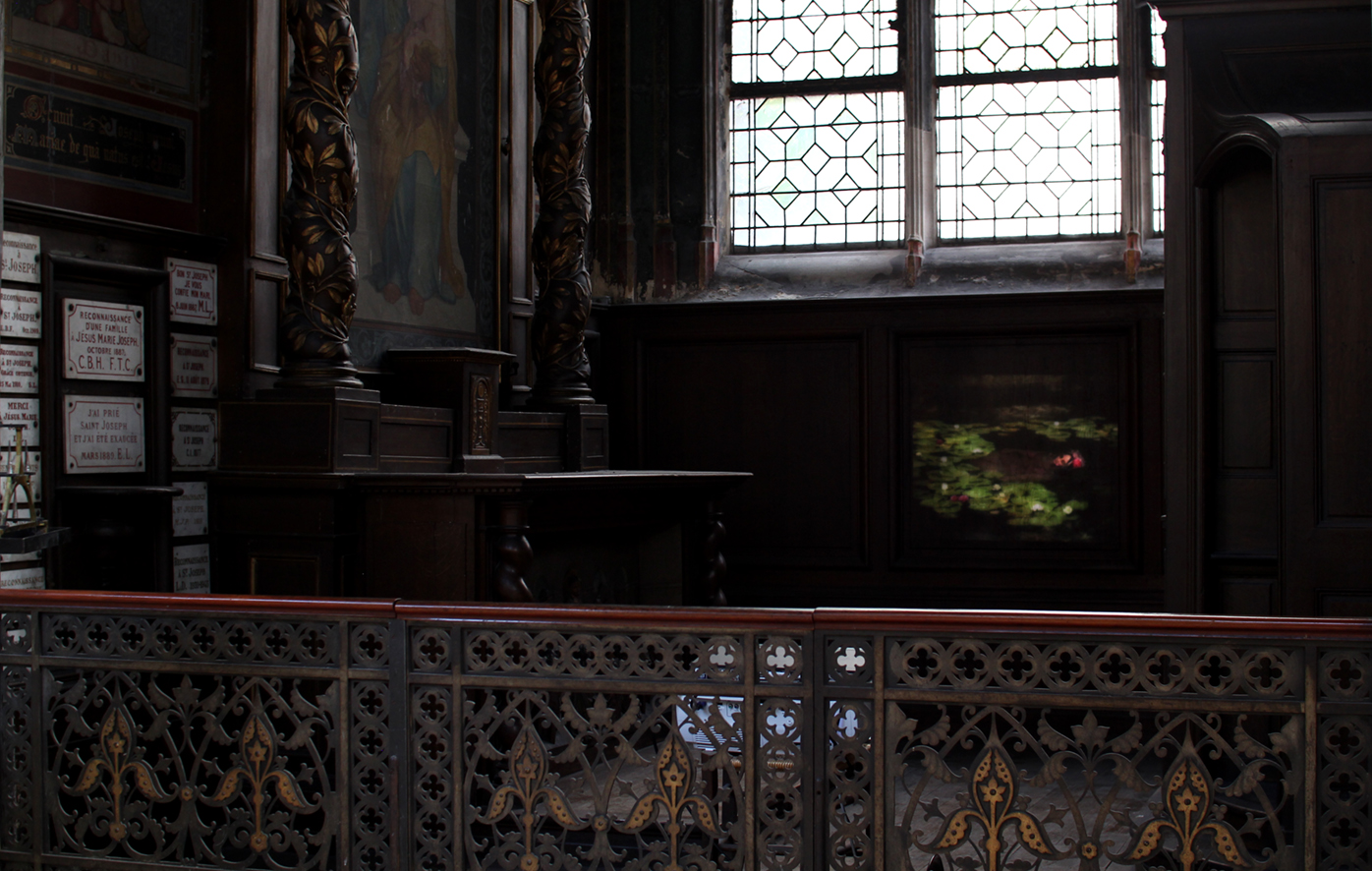
//
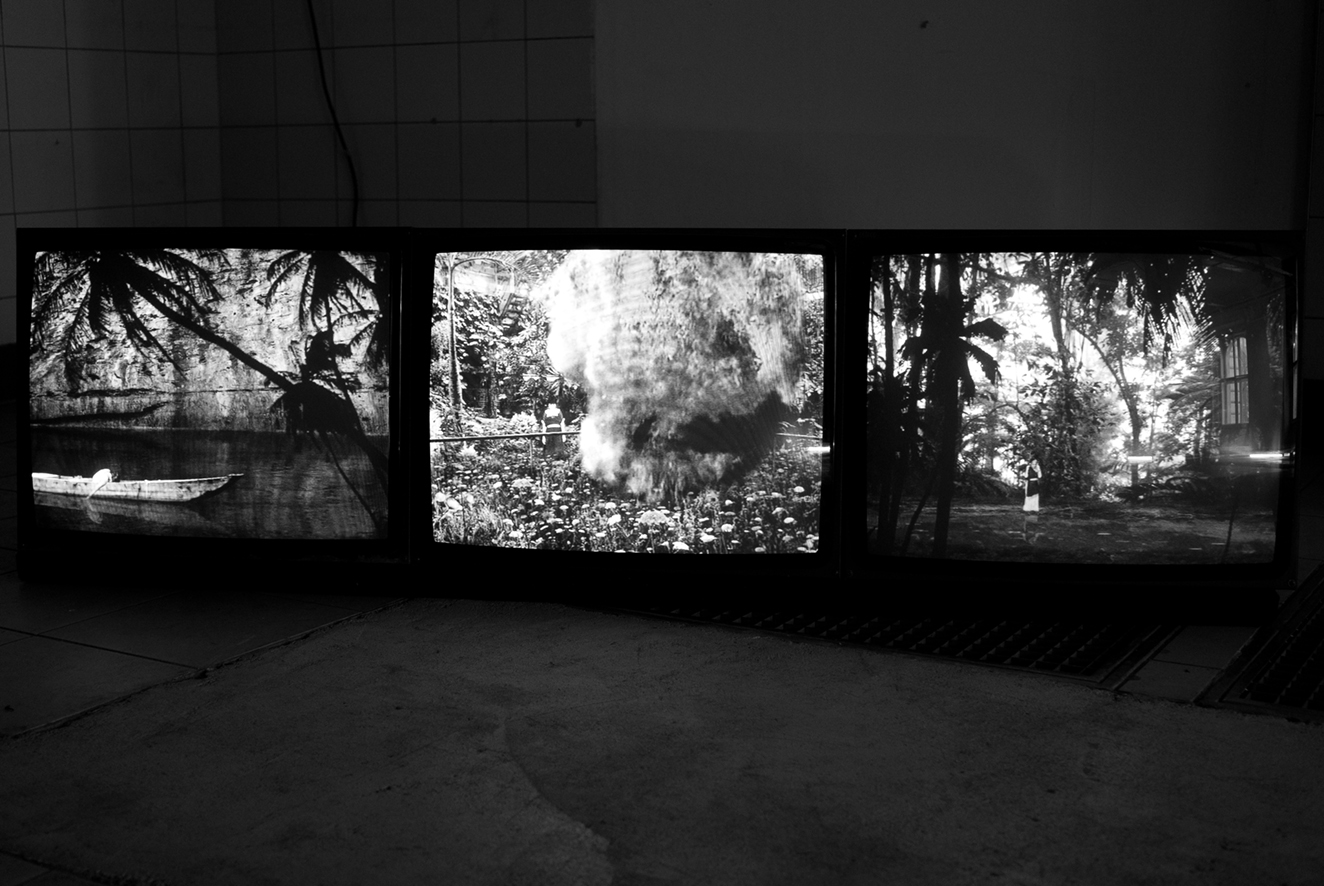
2012 Vienna Art Week // Predicting Memories, Vienna, AT // Group
Curated by Robert Punkenhofer and Ursula Maria Probst, Predicting Memories was showcased at the historic K. K. Telegraph Palace on Börseplatz. Aligned with the festival’s theme, the exhibition delved into the intersection of memory and future predictions within contemporary art.
In contemporary cultural practices, anticipating potential futures and engaging in speculative and critical thinking is essential. Artists analyze skewed historical perspectives and respond to the reshaping of memory, recognizing the tendency for memory spaces to fade away. The featured artists include Horst Ademeit, Julieta Aranda, Anna Artaker, Jennifer Baichwal, Sophie Calle, D-Fuse, Doug Fishbone, Agnes Fuchs, D-Fuse, Terence Gower, Fariba Hajamadi, Yao Jui-Chung, Klub Zwei, Rosmarie Lukasser, Anja Manfredi, Christian Mayer, Jakob Neulinger, Hans Op de Beeck, Patricia Reinhart, Simona Rota, Maria Serebriakova, Katerina Shapiro-Obermair, Fiona Tan, Joëlle Tuerlinkx, Kara Walker, Ai Weiwei and Sislej Xhafa. Activities related to the exhibition were a series of performances by Doug Fishbone, Anna Mitterer & Katherina Olschbaur, Lilo Nein and Suzie Léger; several artists’ talks, a film screening and a panel discussion “About the role of the curator” lead by Robert Punkerhofer with Bettina Leidl, Director of Departure and “curated by Vienna”, Princeton Professor Ruben Gallo and the independent curators Martha Kirszenbaum (Paris) and Moritz Küng (Barcelona).
//
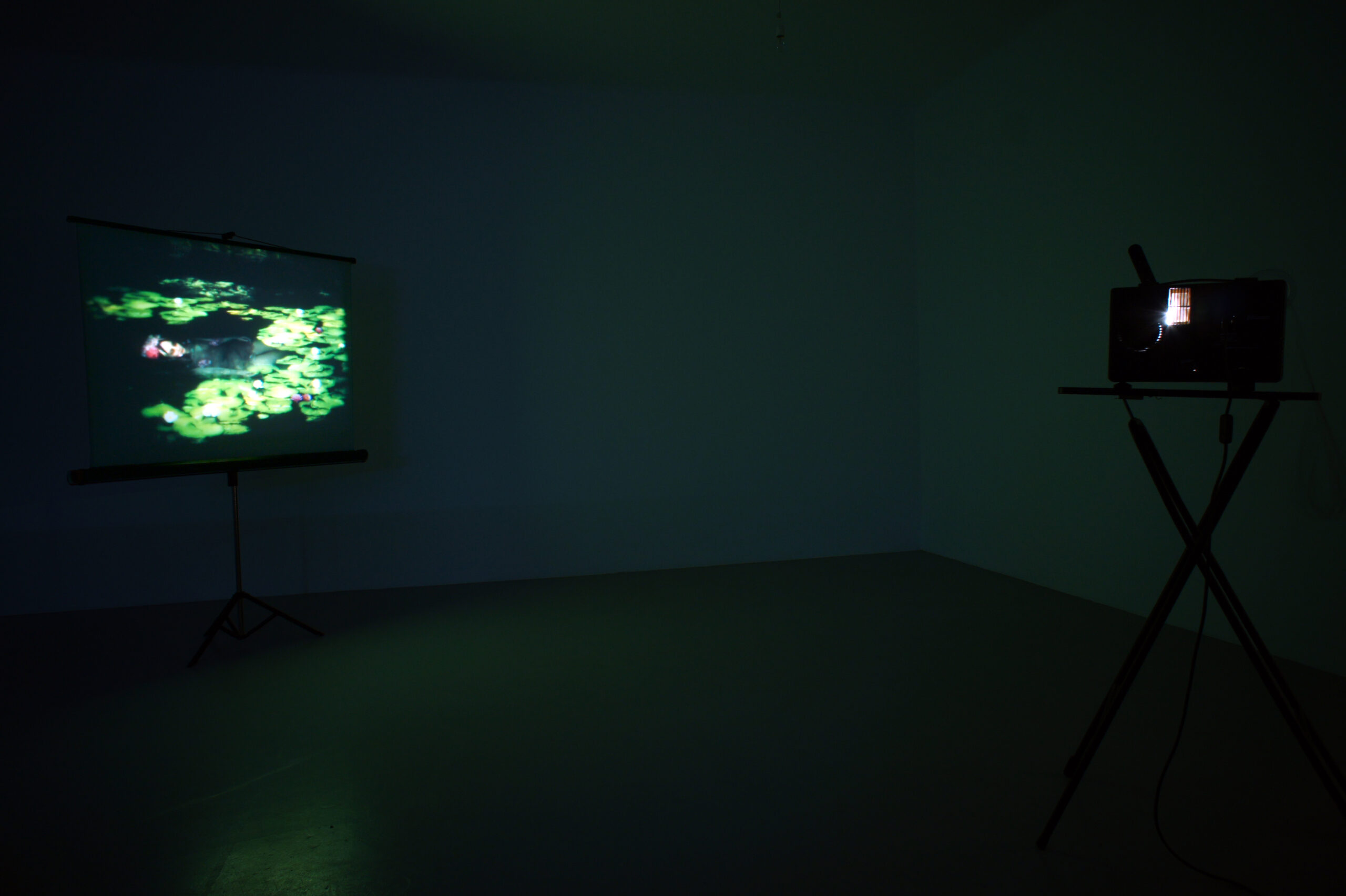




13 Poèmes visibles is comprised of 12 Super-8 film projections titled avant de mourir juxtaposed with a single projection, Ophelia. Patricia Reinhart uses a technique to produce these film loops which she has named ciné-collage. Multiple still photographs of characters and location details are collaged together in painterly layers and given just enough movement to provide a living depth of color and space. Reinhart’s work is a ‘one-woman production.’ She is the model for every character portrayed and all of the images are sourced and arranged by her in a very private studio practice. This process offers a singular viewpoint using a character which is as once a symbol, avatar, and metaphor. The theme-setting image in this installation, Ophelia, functions both as a reference to the artwork by John Everett Millais and to Shakespeare’s character herself in Hamlet. Ophelia’s character represents women’s sexuality and passions as a madness leading to tragedy and death, in her case by drowning that is assumed to be suicide. These works have a direct relationship to melodrama as a form of performance technique, especially in certain operas. Reinhart’s melodramas, rather than having the stock characters of hero, heroine, villain, and so on, consist of a single female character. The overall effect is a narrative of personal growth in the face of an apocalyptic existential state of being.
//
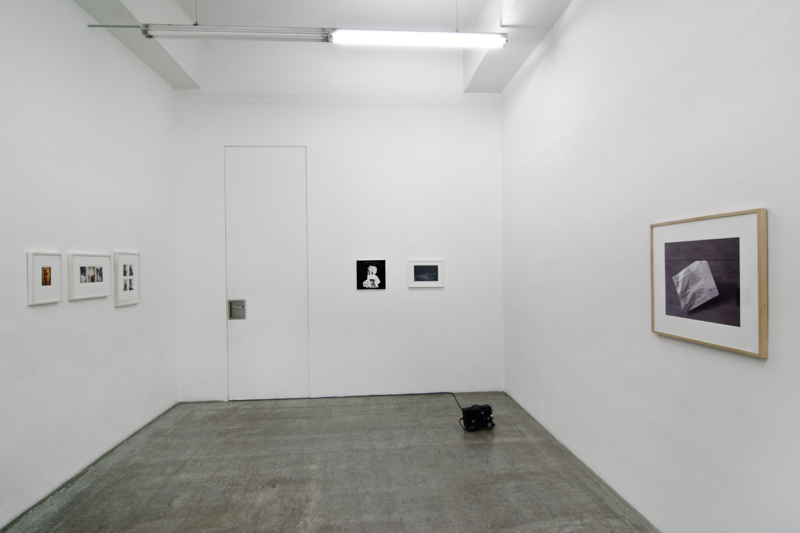
2010 kerstin engholm galerie // Women – ANNA ARTAKER/LILLA KHOOR / RENATE BERTLMANN / MARITA FRASER, EVA GRUBINGER / KATHI HOFER / BIRGIT JÜRGENSSEN / TATIANA LECOMTE, ULRIKE LIENBACHER / LONE HAUGAARD MADSEN / LISA RUYTER / PATRICIA REINHART / EVA SCHLEGEL / MAJA VUKOJE / ASTRID WAGNER / / Vienna, AT // Group
In the group exhibition, kerstin engholm galerie exclusively featured works by female artists residing and working in Austria. The diverse range of media, including photography, painting, film, collage, and sculpture, showcased distinct artistic approaches. Some pieces overtly expressed feminist perspectives, while others conveyed them more subtly. The artists provide a subjective perspective on themes like gender construction, the socially defined role of women, and that of female artists. While certain gestures and methods are recurrent in their works, the varied outcomes illuminate distinct aspects of representation and power dynamics.
//
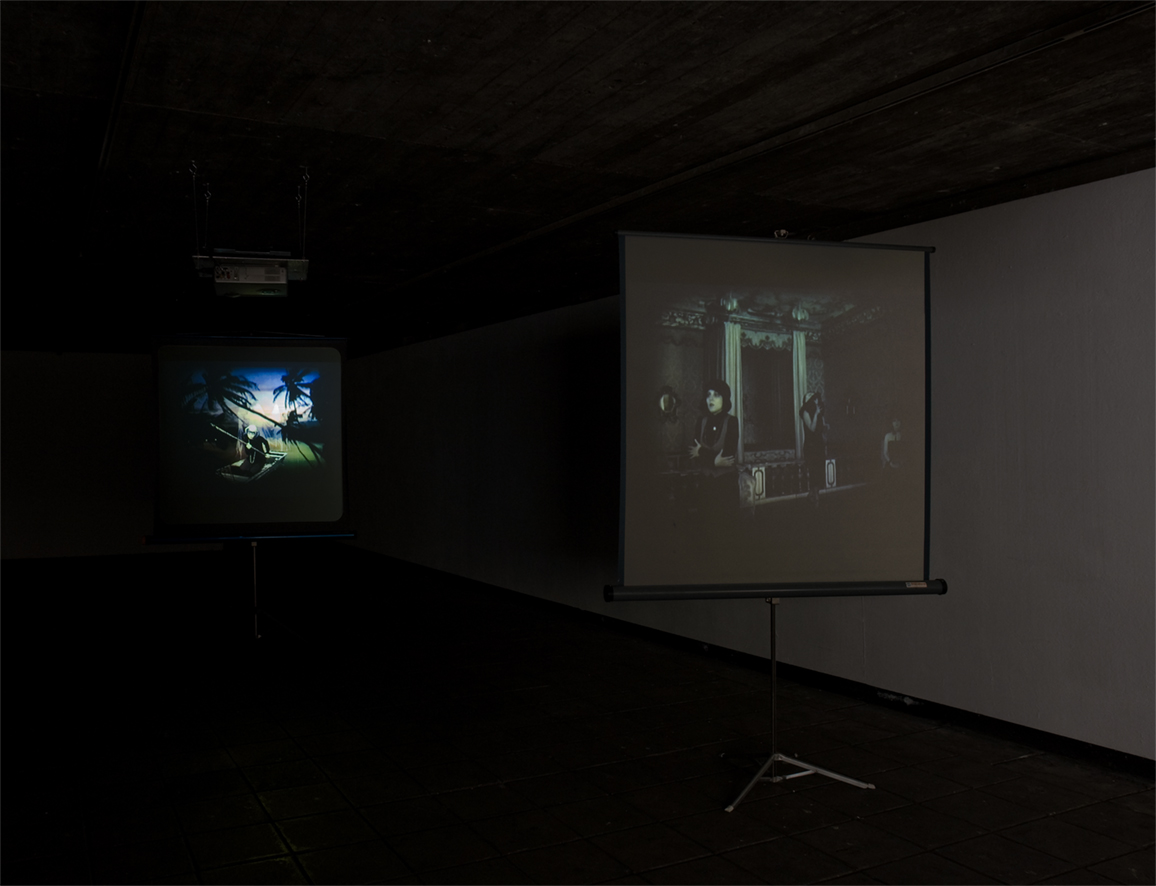

© Patricia Reinhart / Bildrecht
//



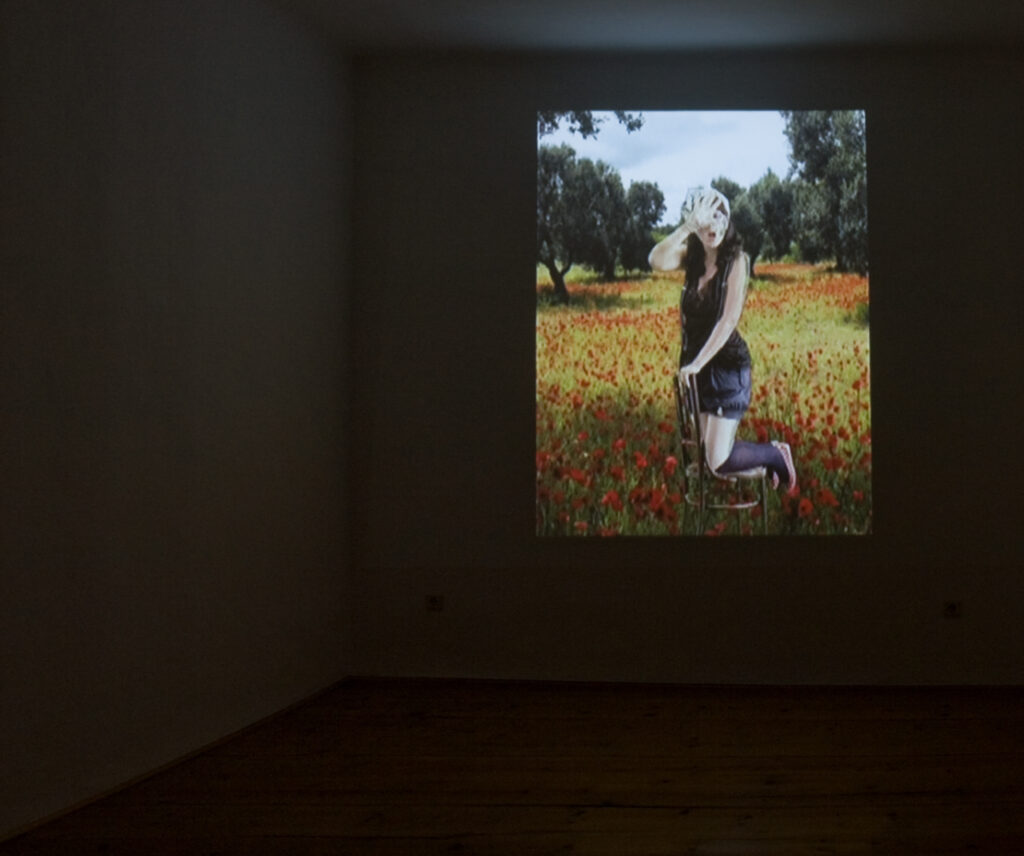



© Patricia Reinhart / Bildrecht
//





Wilted flowers as testimony to former glory now past its prime may be attributes of womanhood. And of fertility, for every angel of annunciation in 15th century paintings carries a flower, usually a lily and not a rose. They use it to reveal themselves as the ones bringing Mary the tidings of her immaculate conception. It is and will remain a mystery: so be it, the world is full of them. In this particular case, however, the bunch of flowers is not a typically female attribute but stands for the fragility of human beings. Usually the bunches are drawn with black charcoal into the superimposed paint layers. This heightens the effect of fragility. The dark area lying beneath is often exposed. Perhaps Les Chants de Maldoror by the Comte de Lautréamont, a text the Surrealists picked up on much later, are shining through here. The author is called – a quaint detail of history – the grandfather of Surrealists, which seems strange given that he died when only 24 years old. The texts by this poet, whose life is only known in part and whose work has survived only in fragments, are spheres of association where it is good to dwell and work. Death is only a part of life and should not be confused with darkness and depression. Hardly anyone understands that. But I immediately realised that the paintings and videos by Patricia Reinhart are not about sobbing in a dark basement.
The element of drawing and the reduction to single lines filter out what is anatomically unimportant. And the figures always keep a critical distance to the world around them. They deliberately seek a place outside of society and their innermost feelings are not disclosed. Their humanity is in conflict with the outside world that shines in through a train window or shimmers through tendrils of flowers on to nocturnal black. It befits the beautiful, palely made up faces of the silent movie stars depicted, strong women who vanished from prominence as silent movies became talking movies. By that time they had already profoundly changed the image of women in society and given a voice to the simple women in the street. Melodrama, the classical genre for women, was studded with angels and vamps to be appreciated by switchboard girls and shop girls who finally had the freedom to roam the streets of big cities and smoke cigarettes. Lyda Borelli, a silent-movie star from the 1910s, avoided the shame of being discarded by retiring from the screen prematurely. Others, such as Asta Nielsen, were hit harder.
Painting is a real struggle, as is life. It can happen that a painting is destroyed at the drop of a hat. A tiny moment of carelessness and the composition will be lost beyond rescue. The black reminds one of a blackboard on which one can write with a lacquer pen. Shiny and matte areas alternate. In some places the paint runs or streaks and the world or some of its details become blurred. Cross fading to the video: created in painstaking detail from still photographs. The ciné-collage is a one-woman production and the decision to do it alone was not informed by economic constraints but taken very deliberately. After all, painting, the root cause of all action in this case, is not a task one would share either. It takes enormous time to produce the films, but at the end of the day the animation and montage is not monosyllabic, for it always relates to its point of reference and departure: painting, the starting point of all activity in this universe. Media hopping. And the motifs/themes/issues are addressed at several levels: painting, drawing, video.


The collection of figures roams through landscapes and rooms in stop-and-go motion. The stop-and-go element exacerbates to grotesque levels the silent-movie gesture, which this is all about and which is full of pathos to begin with. The ciné-collage is surrounded by stage-setting, an important element. Nothing is left to chance. The collage is embedded in a glowing sea of candles, between wreaths and floral decorations. Gauze, moved by a sea breeze, acts as a canvas. What is the most important thing? Nostalgia, the darkness, the nights as arenas of fear and oppression. The clouds of an agitated sky are suddenly moving across a festive hall decorated in sumptuous art nouveau. In the mirror one sees a pale-skinned beauty lounging seductively, the abundant blond hair of her wig flowing across her body like a waterfall. Mirrors create confusion: reconstructions of the self in shiny variations, explored by psychoanalysis down to the profoundest depths. Abysses. Monsters. The woman being kissed moves in fitful jerks, like a puppet on a string. Is she giving in to the kiss or struggling against it? Is the kiss an assault or the expression of lust? Beautiful corpses gliding past. On the Styx river into the Hades of movie history. Accompanied by sounds going back to Henry Purcell. Edited, mixed and altered with great dedication. One would like to swim along and dive into this cosmos, to experience the longing and look into another world before it pales, disappears and becomes irretrievably lost. // Exhibition text by Petra Henninger, Essl Museum, AT, 2008

//
2007 Lyda’s Death / Oficina#1 / Caracas, VE
//



//
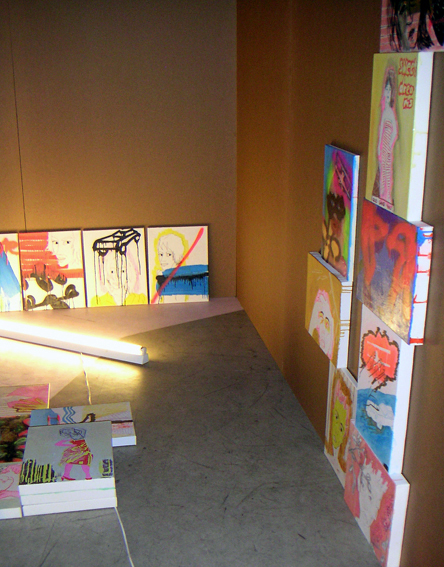

//


JE T’AIME – Fashion project, Vienna 2002/03 // Old clothes from friends and family, otherwise destined for disposal, were recycled and reimagined, cut, painted, and assembled with tape, without the use of thread or needle. Trousers transform into long and short skirts (with slits) and tops, sleeves are repurposed into strips, text quotes and self-portraits adorn individual pieces, while holes and cutouts were created, sometimes knotted together with other leftover parts of the garments.
Several photo sessions, photographer: Florian Mair, took place in the photo studio with invited friends from the arts. The performers included painters, architects, actors, musicians, and photographers from Vienna. This was followed by additional mise en scène in private settings in their respective flats, encompassing both staging and self-staging. The use of medium format and Polaroids resulted in a few hundred images emerging between 2002 and 2003. This work was nominated for the Pfann Ohmann Award and was exhibited for the first time at the Künstlerhaus Vienna in 2003, as part of a subsequent group exhibition. It was also shown in Bern at marks blond project. Subsequently, the first Ciné collage was created, exclusively assembled from these photos.
//